
How to Use MT3608: Examples, Pinouts, and Specs
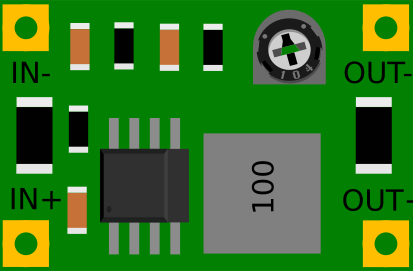
 Design with MT3608 in Cirkit Designer
Design with MT3608 in Cirkit DesignerIntroduction
The MT3608 is a high-efficiency step-up (boost) DC-DC converter designed to increase an input voltage to a higher output voltage. It is widely used in applications where a stable, higher voltage is required from a lower voltage source, such as in battery-powered devices. The MT3608 is compact, cost-effective, and highly efficient, making it a popular choice for hobbyists and professionals alike.
Explore Projects Built with MT3608
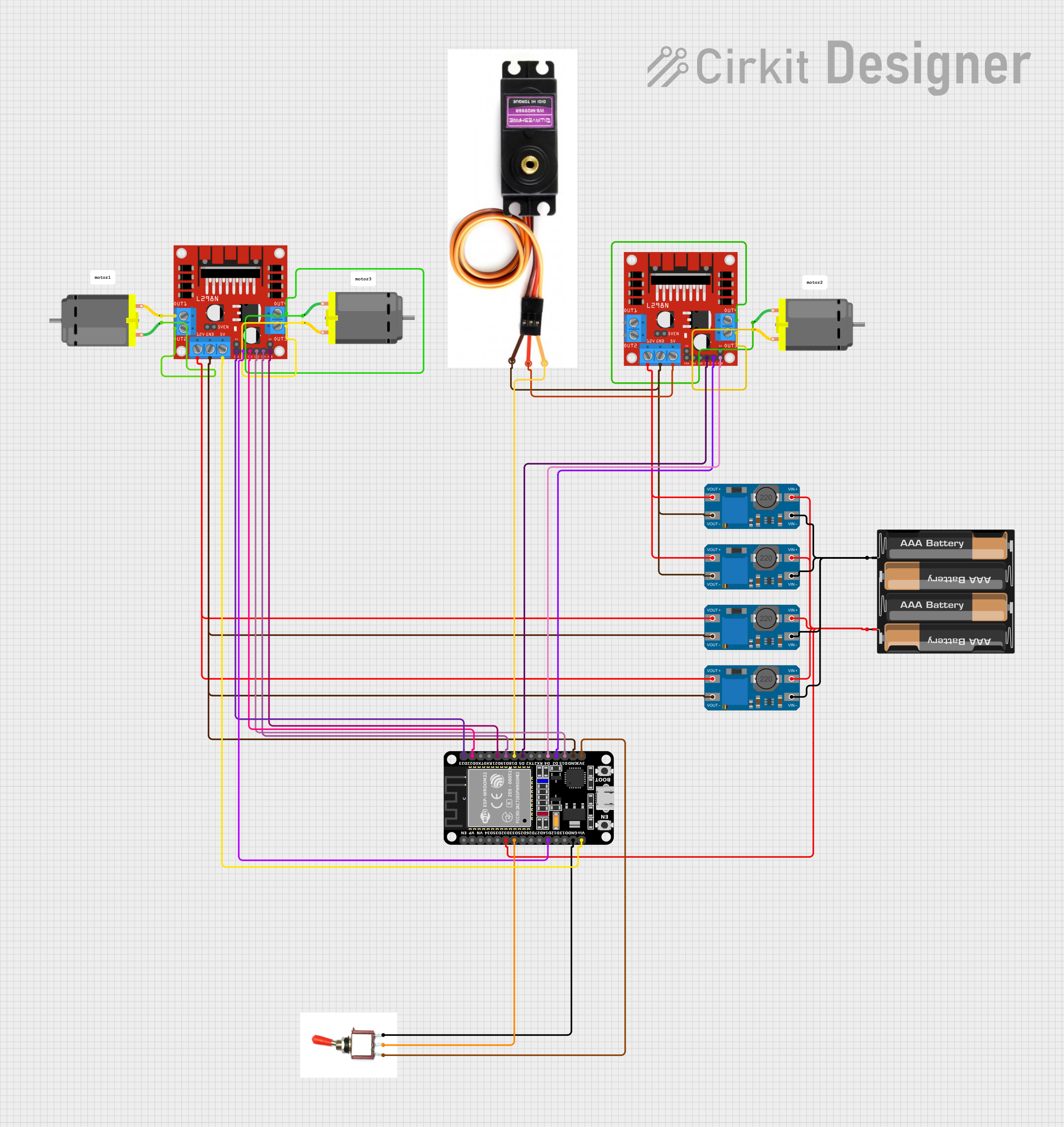
 Open Project in Cirkit Designer
Open Project in Cirkit Designer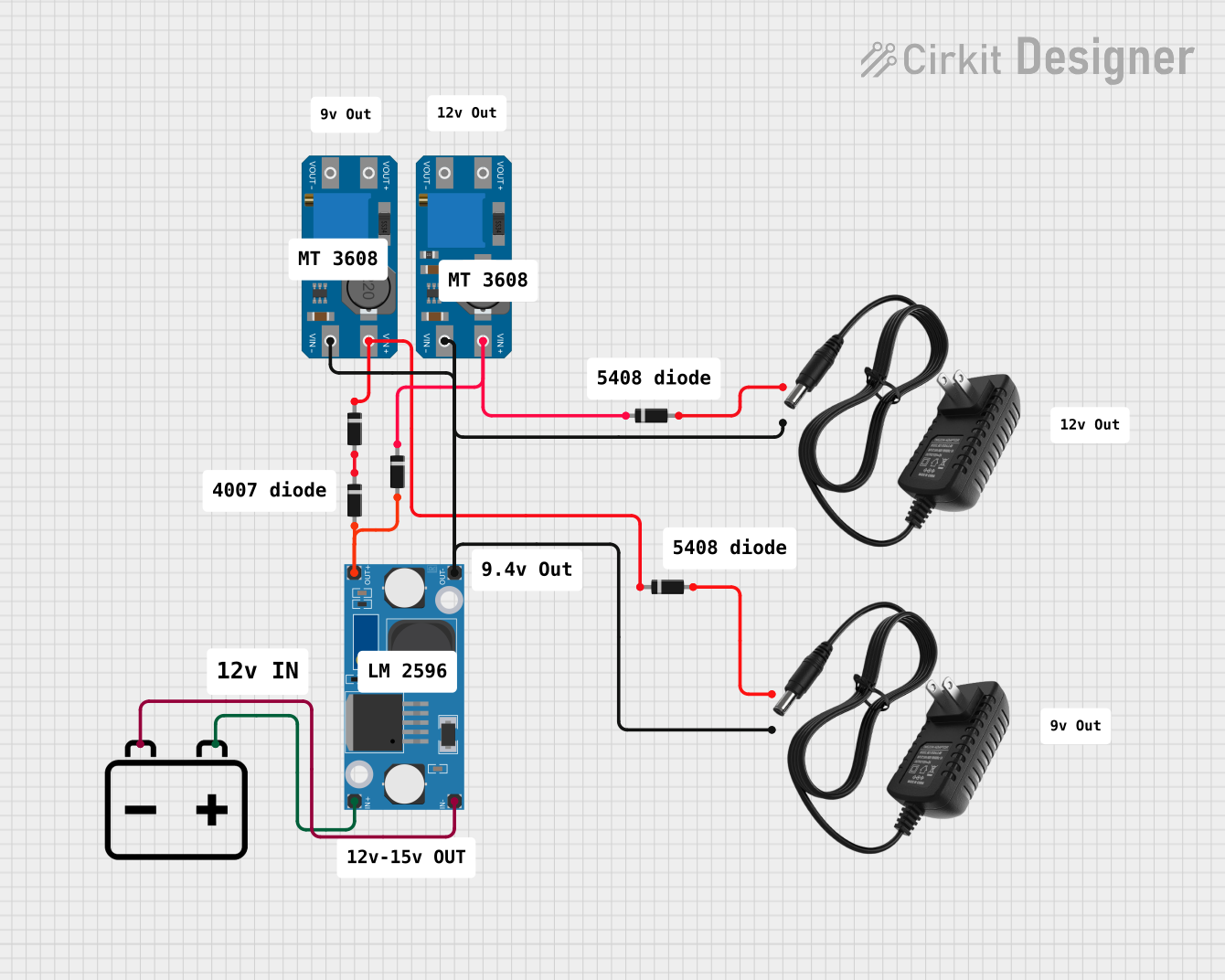
 Open Project in Cirkit Designer
Open Project in Cirkit Designer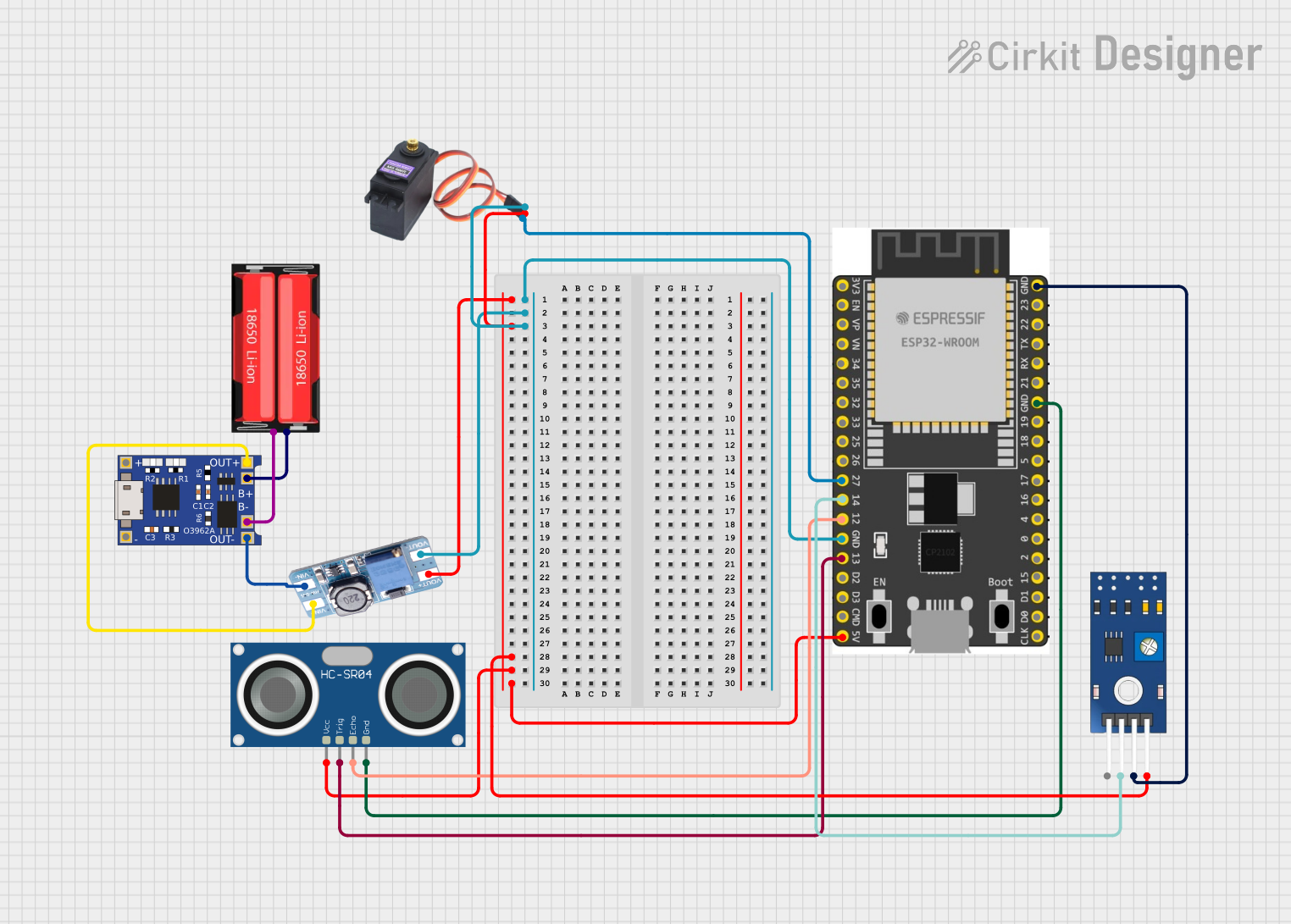
 Open Project in Cirkit Designer
Open Project in Cirkit Designer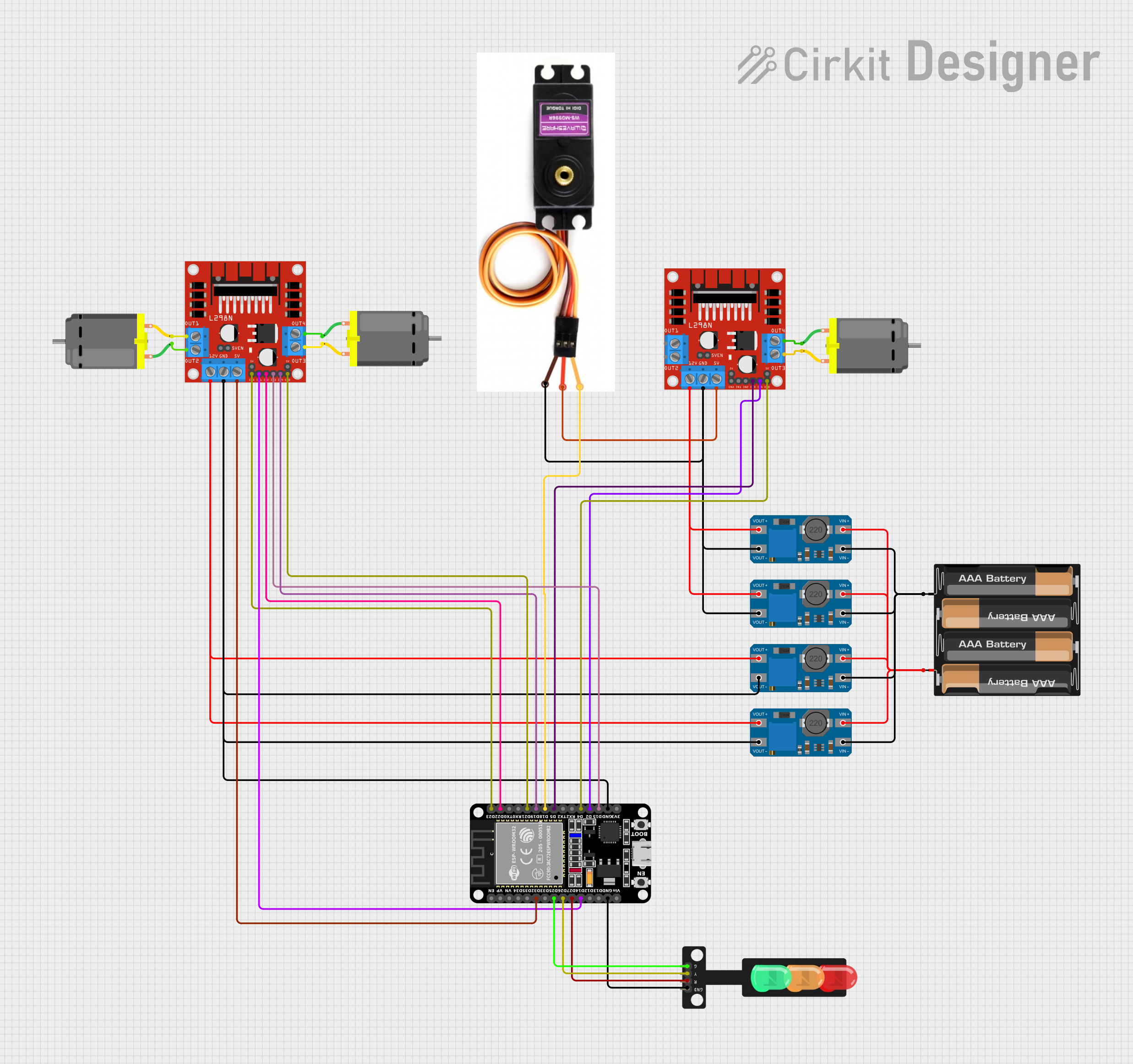
 Open Project in Cirkit Designer
Open Project in Cirkit DesignerExplore Projects Built with MT3608

 Open Project in Cirkit Designer
Open Project in Cirkit Designer
 Open Project in Cirkit Designer
Open Project in Cirkit Designer
 Open Project in Cirkit Designer
Open Project in Cirkit Designer
 Open Project in Cirkit Designer
Open Project in Cirkit DesignerCommon Applications
- Powering LEDs, sensors, and microcontrollers from low-voltage batteries
- Portable electronics and battery-powered devices
- Solar-powered systems
- DIY electronics projects requiring voltage conversion
Technical Specifications
The MT3608 is available as a module or as a standalone IC. Below are its key technical details:
Key Specifications
- Input Voltage Range: 2V to 24V
- Output Voltage Range: 2V to 28V (adjustable via a potentiometer on the module)
- Maximum Output Current: 2A (depending on input voltage and load conditions)
- Efficiency: Up to 93%
- Switching Frequency: 1.2 MHz
- Quiescent Current: 20 µA (typical)
- Operating Temperature: -40°C to +85°C
Pin Configuration (Standalone IC)
The MT3608 IC has 6 pins, as described in the table below:
| Pin Number | Pin Name | Description |
|---|---|---|
| 1 | SW | Switch pin. Connects to the inductor. |
| 2 | GND | Ground pin. Connect to the circuit ground. |
| 3 | FB | Feedback pin. Used to set the output voltage. |
| 4 | EN | Enable pin. High to enable the IC, low to disable. |
| 5 | VIN | Input voltage pin. Connect to the power source. |
| 6 | VOUT | Output voltage pin. Connect to the load. |
Pin Configuration (MT3608 Module)
The MT3608 module typically has 4 pins:
| Pin Name | Description |
|---|---|
| VIN | Input voltage pin. Connect to the power source. |
| GND | Ground pin. Connect to the circuit ground. |
| VOUT | Output voltage pin. Connect to the load. |
| EN | Enable pin. High to enable the module, low to disable. |
Usage Instructions
Using the MT3608 in a Circuit
- Connect the Input Voltage:
- Connect the positive terminal of your power source to the
VINpin. - Connect the negative terminal of your power source to the
GNDpin.
- Connect the positive terminal of your power source to the
- Connect the Output Voltage:
- Connect the
VOUTpin to the positive terminal of your load. - Connect the
GNDpin to the negative terminal of your load.
- Connect the
- Adjust the Output Voltage:
- Use the onboard potentiometer (on the module) to adjust the output voltage.
- Turn the potentiometer clockwise to increase the output voltage and counterclockwise to decrease it.
- Enable the Module:
- Ensure the
ENpin is connected to a high logic level (or left floating, as it is internally pulled up).
- Ensure the
Important Considerations
- Input Voltage: Ensure the input voltage is within the 2V to 24V range.
- Output Voltage: Do not exceed the maximum output voltage of 28V.
- Load Current: The maximum output current is 2A, but this depends on the input voltage and load conditions. Exceeding this limit may damage the module.
- Heat Dissipation: For high current loads, ensure proper heat dissipation to prevent overheating.
- Capacitors: Use appropriate input and output capacitors to stabilize the voltage and reduce noise.
Example: Using MT3608 with Arduino UNO
The MT3608 can be used to power an Arduino UNO from a low-voltage battery. Below is an example circuit and code:
Circuit Connections
- Connect the battery's positive terminal to the
VINpin of the MT3608 module. - Connect the battery's negative terminal to the
GNDpin of the MT3608 module. - Adjust the MT3608 output voltage to 5V using the potentiometer.
- Connect the
VOUTpin of the MT3608 to the5Vpin of the Arduino UNO. - Connect the
GNDpin of the MT3608 to theGNDpin of the Arduino UNO.
Example Code
// Example code to blink an LED using Arduino UNO powered by MT3608
const int ledPin = 13; // Pin connected to the onboard LED
void setup() {
pinMode(ledPin, OUTPUT); // Set the LED pin as an output
}
void loop() {
digitalWrite(ledPin, HIGH); // Turn the LED on
delay(1000); // Wait for 1 second
digitalWrite(ledPin, LOW); // Turn the LED off
delay(1000); // Wait for 1 second
}
Troubleshooting and FAQs
Common Issues
No Output Voltage:
- Ensure the input voltage is within the specified range (2V to 24V).
- Check the
ENpin. It should be high or left floating to enable the module. - Verify all connections are secure and correct.
Output Voltage is Incorrect:
- Adjust the potentiometer to set the desired output voltage.
- Ensure the feedback resistor network (if using the standalone IC) is configured correctly.
Overheating:
- Check if the load current exceeds the module's maximum rating (2A).
- Ensure proper heat dissipation, such as adding a heatsink or improving airflow.
Noise or Voltage Instability:
- Add appropriate input and output capacitors to stabilize the voltage.
- Ensure the inductor and capacitors meet the recommended specifications.
FAQs
Q1: Can the MT3608 step down voltage?
No, the MT3608 is a step-up (boost) converter and cannot step down voltage. For step-down applications, use a buck converter.
Q2: What is the efficiency of the MT3608?
The MT3608 has an efficiency of up to 93%, depending on the input voltage, output voltage, and load conditions.
Q3: Can I use the MT3608 to power a Raspberry Pi?
While the MT3608 can provide 5V output, it may not supply sufficient current for a Raspberry Pi under heavy load. Use a more robust power supply for such applications.
Q4: How do I calculate the output voltage?
For the standalone IC, the output voltage is determined by the feedback resistor network connected to the FB pin. Use the formula:
[ V_{OUT} = V_{REF} \times \left(1 + \frac{R1}{R2}\right) ]
where ( V_{REF} ) is typically 0.6V.